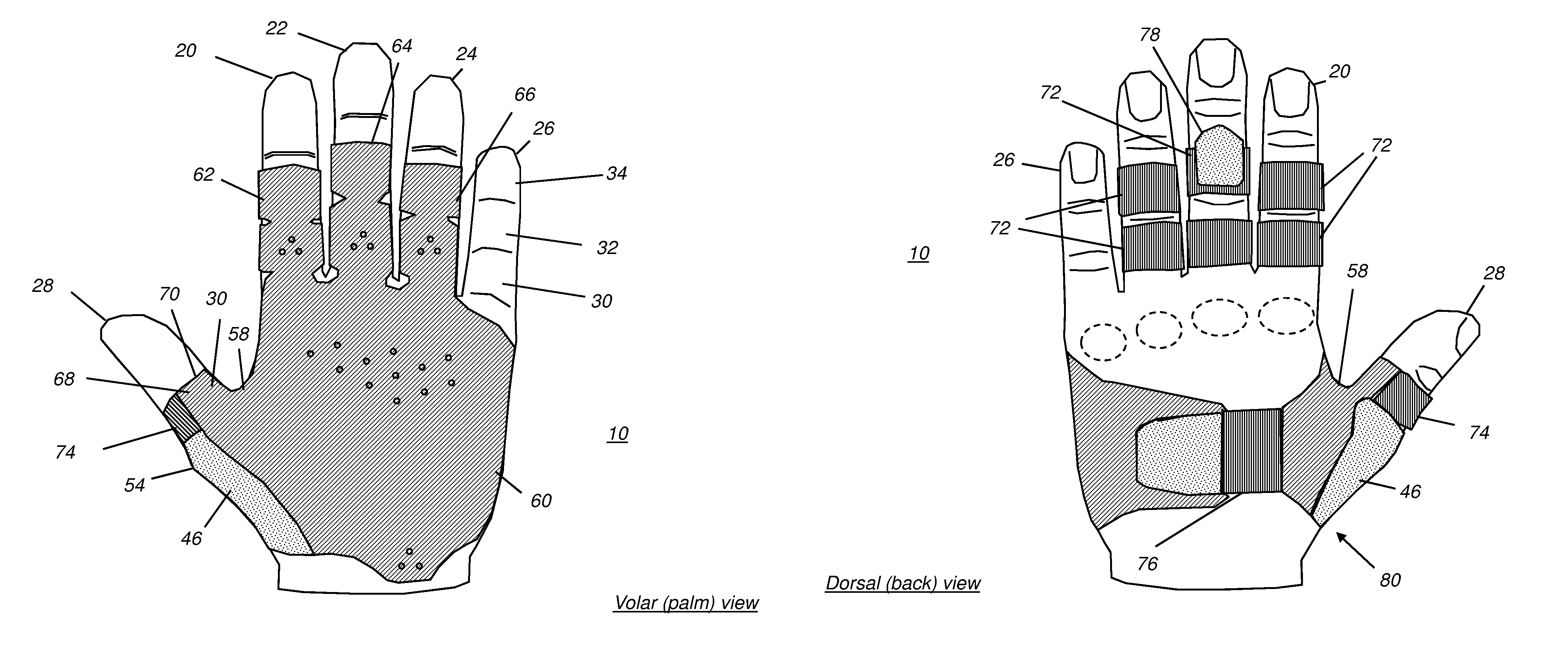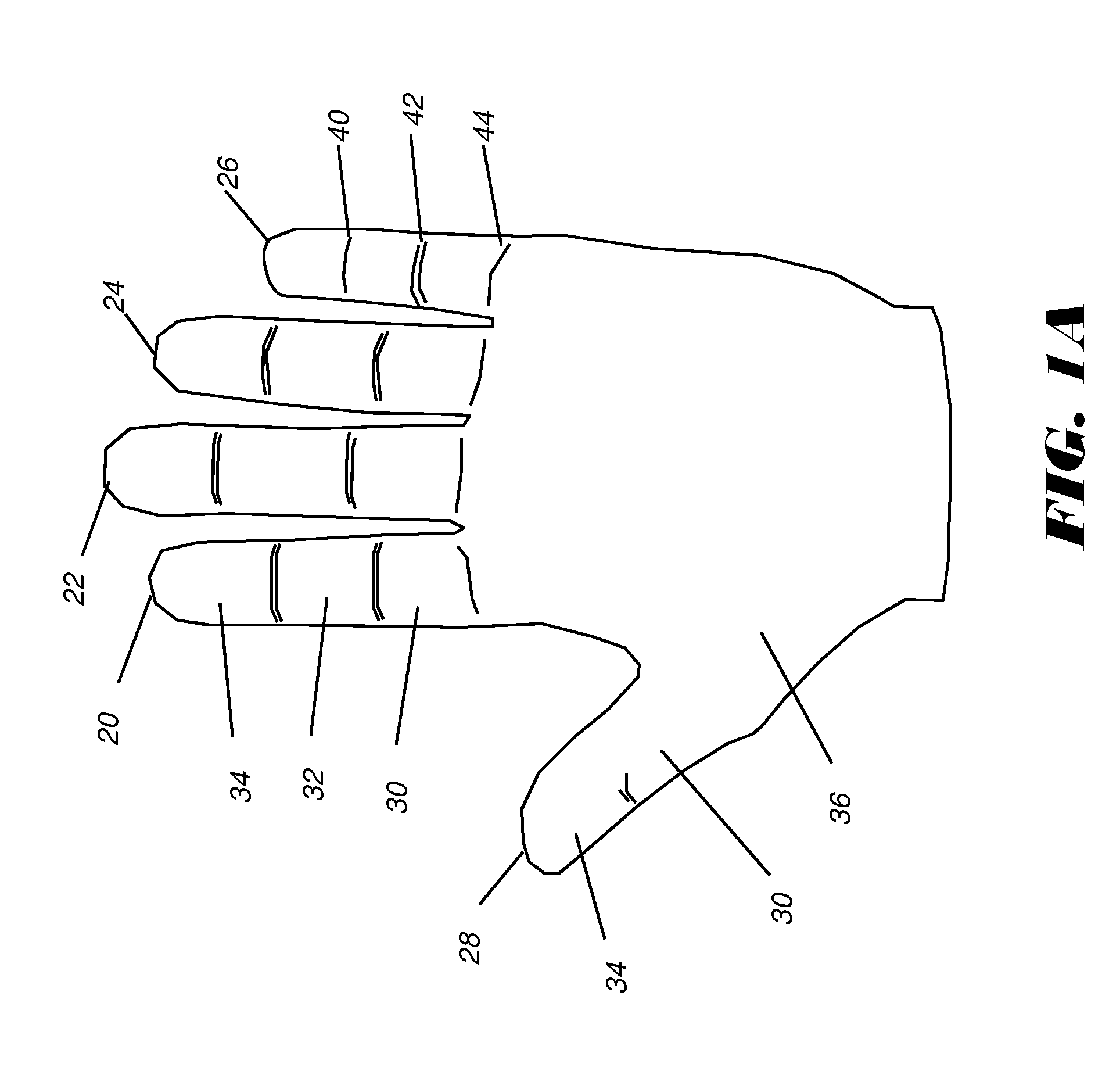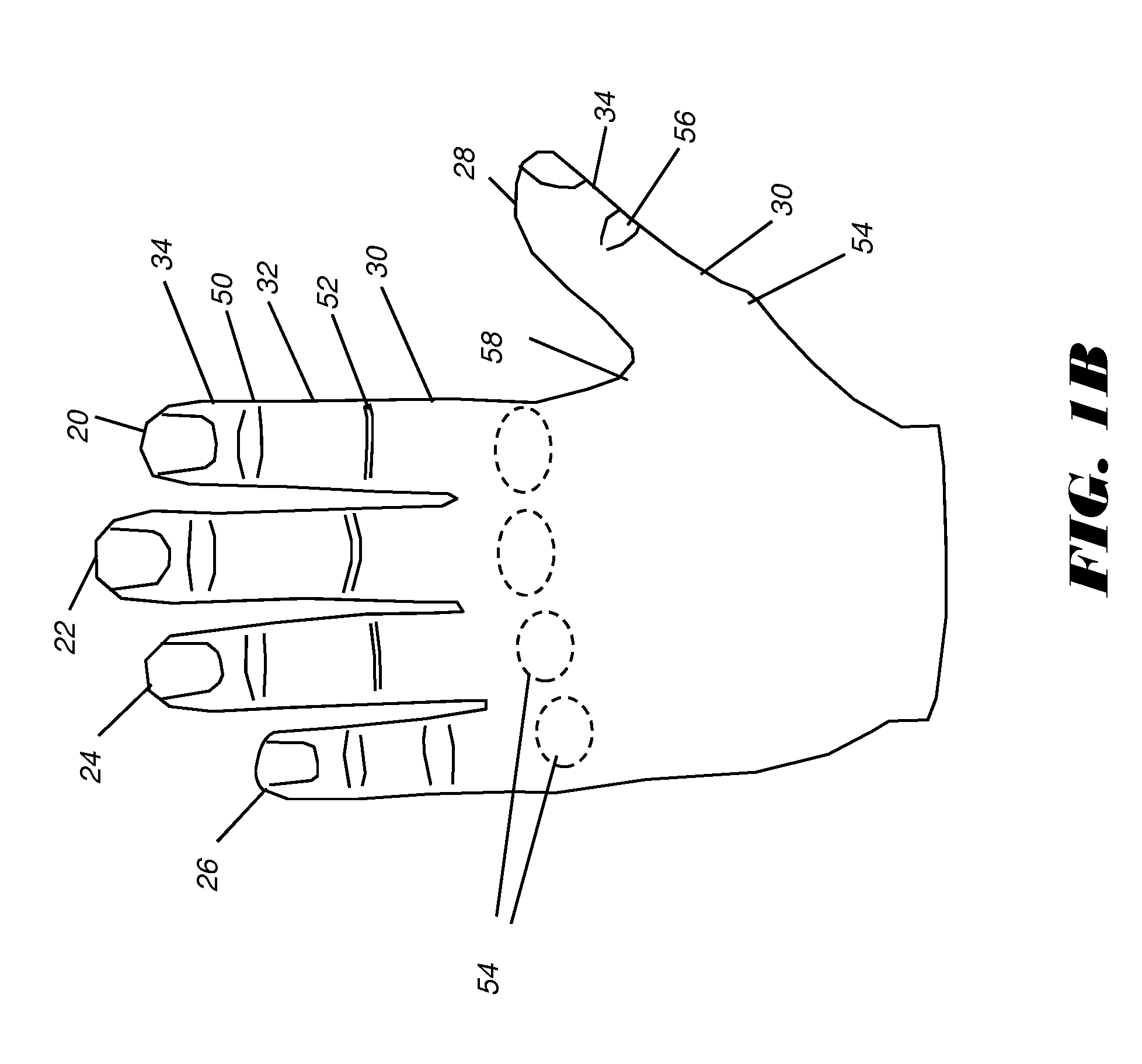Protective hand covering
a hand covering and hand technology, applied in the field of hand coverings, can solve the problems of calluses, blisters, and related damage to the skin of the hand of the rower, and achieve the effects of preventing blisters, reducing the risk of blisters, and reducing the wear and tear of the hand
- Summary
- Abstract
- Description
- Claims
- Application Information
AI Technical Summary
Benefits of technology
Problems solved by technology
Method used
Image
Examples
Embodiment Construction
[0036]The present description is directed in particular to elements forming part of, or cooperating more directly with, apparatus in accordance with the invention. It is to be understood that elements not specifically shown or described may take various forms well known to those skilled in the art.
[0037]In the context of the present disclosure, the use of terms such as “first”, “second”, “third”, etc., does not by itself connote any priority, precedence, or order of a component or claim element over another or the temporal order in which acts of a method are performed. These terms may be used more generally as labels to distinguish one element having a certain name from another element having the same name (but for use of the ordinal term) or to distinguish the claim elements.
[0038]In order to have a better understanding of the protective hand covering of the present invention and a better understanding of terms used in the present disclosure, it is instructive to review some aspect...
PUM
 Login to View More
Login to View More Abstract
Description
Claims
Application Information
 Login to View More
Login to View More - R&D
- Intellectual Property
- Life Sciences
- Materials
- Tech Scout
- Unparalleled Data Quality
- Higher Quality Content
- 60% Fewer Hallucinations
Browse by: Latest US Patents, China's latest patents, Technical Efficacy Thesaurus, Application Domain, Technology Topic, Popular Technical Reports.
© 2025 PatSnap. All rights reserved.Legal|Privacy policy|Modern Slavery Act Transparency Statement|Sitemap|About US| Contact US: help@patsnap.com



